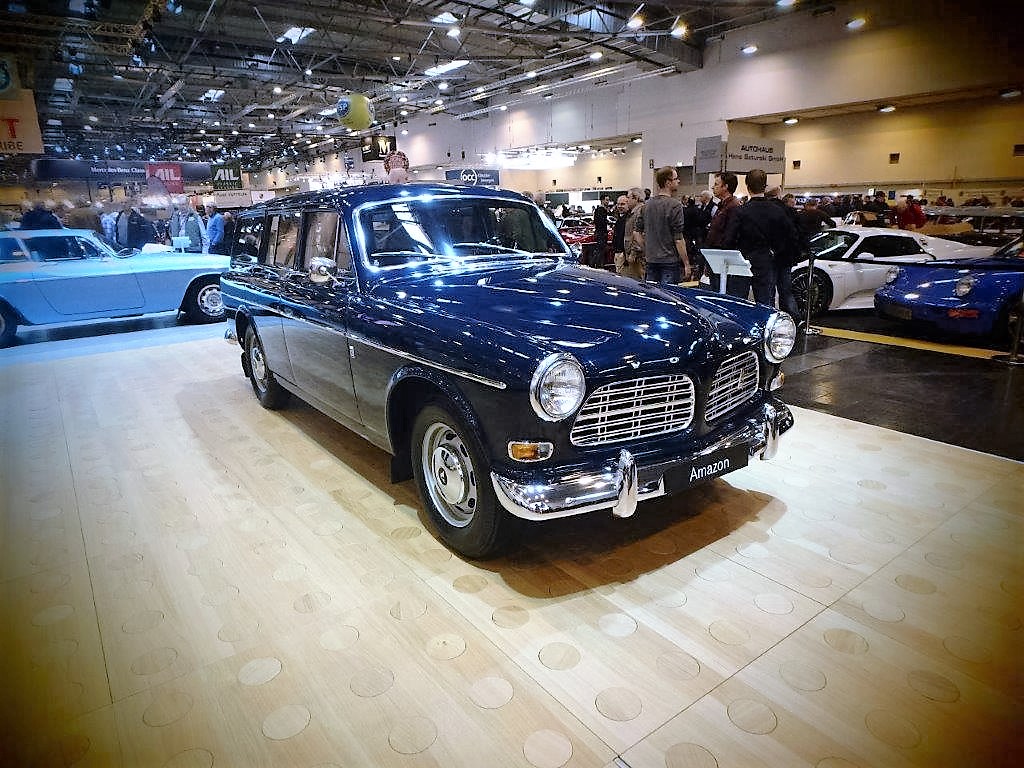-
Insurance
InsuranceAbout our productsLearn about insuringGet a quote Get current values, historical values, model history and more.
-
Valuation
ValuationHagerty valuation toolLook up a vehicle value Get current values, historical values, model history and more.
-
Events
EventsHagerty official eventsHagerty ClubhouseEvent calendar
-
Entertainment
EntertainmentMore to explore
- Portal login
1959 Volvo 122S Amazon
Base 4dr Saloon 1.6 L
Vehicle values by condition
Fair
Condition 4
£3,800
#4 cars are daily drivers, with flaws visible to the naked eye. The chrome might have pitting or scratches, the windshield might be chipped.
Good
Condition 3
£7,200
#3 cars could possess some, but not all of the issues of a #4 car, but they will be balanced by other factors such as a fresh paint job or a new, correct interior.
Excellent
Condition 2
£11,800
#2 cars could win a local or regional show. They can be former #1 cars that have been driven or have aged. Seasoned observers will have to look closely for flaws.
Concours
Condition 1
£20,200
#1 vehicles are the best in the world. The visual image is of the best car, unmodified, in the right colours, driving onto the lawn at the finest concours.
Insurance premium for a
1959 Volvo 122S Amazon Base 4dr Saloon 1583
valued at £7,200
£107.72
/ year*
History of the 1956 - 1967 Volvo 122S Amazon

1956 - 1967 Volvo 122S Amazon
The Volvo Amazon was introduced in August 1956 to accompany the PV444, which looked like a 1941 Ford design. The PV44 lingered until 1966, gaining a curved windshield in 1958, as the PV544. The Amazon was designed by Jan Wilsgard, looking like a small 1950s Chrysler New Yorker. It was initially available as a four-door saloon, then from 1961 as a two-door saloon and from 1962 as a station wagon.
By the time the Amazon was discontinued in 1970, in favour of the boxy 140 Series, it was looking as out-dated as its predecessor. Due to a dispute over the name with German motorcycle manufacturer Kreidler, it was only called the Amazon in Sweden; everywhere else the cars were badged as the 120 Series. Mechanically, the first Amazon shared the wheelbase and running gear of the PV444, with the 60bhp, 1,583cc OHV B16 engine and three-speed gearbox. Early cars were delivered in February 1957, attractively painted in red and grey two-tone with a black roof, or black with a grey roof.
The 85bhp 122S saloon was introduced for export in 1958 with twin carburettors and a four-speed gearbox. Dark blue/grey roof colours were added. That year, front seatbelts were standardised. In 1961 a two-door saloon was offered, the engine expanded to 1,778cc and 95bhp as the B18, and front disc brakes were fitted.
The four-door station wagon was introduced at the 1962 Stockholm show and was built until 1969 with a two-piece tailgate, whose lower half folded down as a loading platform. From 1964 a three-speed Borg-Warner automatic transmission was available.
The Volvo 122 Series proved a tough rally competitor and in 1963 scored class wins at the Nurburgring and at Brands Hatch, and a first place in the European Rally Championship. In 1964 they won the Shell 4000 Rally in Canada, a warmup for 1965. That year, Volvo 122s won the Shell 4000, the European Touring car Championship, the Manufacturers World Championship, the Acropolis Rally and the Rally Sweden.
Introduced in 1967, about 1,500 two-door 123 GT models were built, with the high performance engine from the P1800 sports coupe, four-speed gearbox with overdrive, power front disc brakes, reclining Recaro seats, twin seven-inch Hella fog and driving lights, an alternator and a rev counter. The cooling system was sealed, a first for Volvo. A few cars were imported to the UK, where Ruddspeed boosted the 115bhp, B18 engine to 132bhp.
The 1,998cc B20 engine appeared in 1968, as did the boxy 140 Series, which began its 25-year production cycle and all Volvos received dual circuit braking systems. The last 122 saloon and wagons were delivered in 1970.
All 120 Series cars were built of phosphate-treated steel, with undercoating and anti-corrosive oils, and are quite rust-resistant. Front suspension issues have been noted however, and dash board vinyl caps invariably crack.
Overall, the model was a sturdy workhorse, initially built in Gothenburg, and from 1964 in the new plant at Torslandverken. In 15 years a total of 667,791 120 Series cars were delivered, divided into 359,917 two-door saloons, 234,653 four-door saloons and 73,221 station wagons.
Few genuine 123 GTs survive, as most went in harm’s way, but there are a fair number of 123 GT clones, which can be accurately constructed. However real GTs can be recognized by their Type number, which should be 133351 or 133352. Only pay real money for a real car.
Hagerty Newsletter
Get your weekly dose of car news from Hagerty UK in your inbox

ADVERTISEMENT